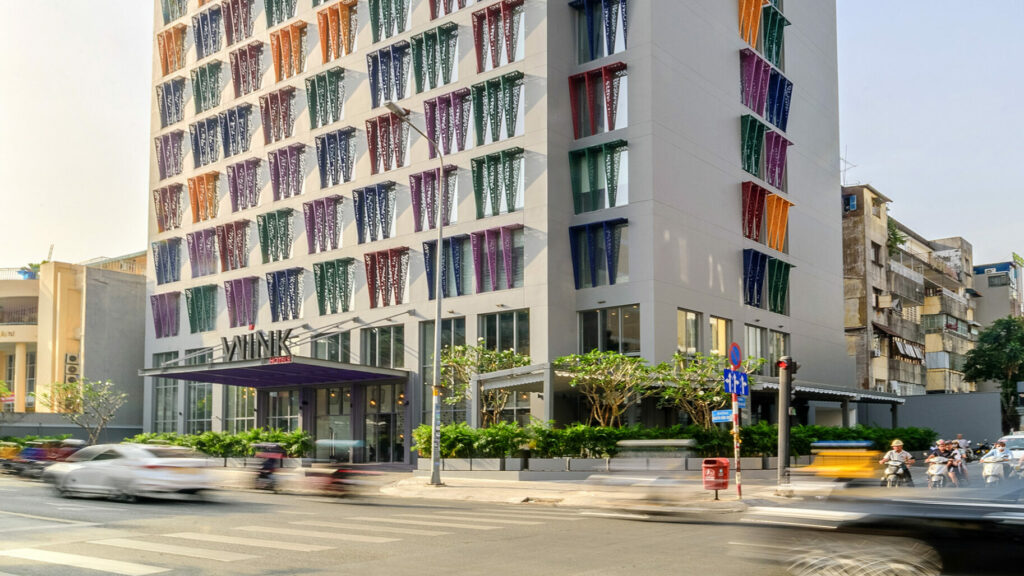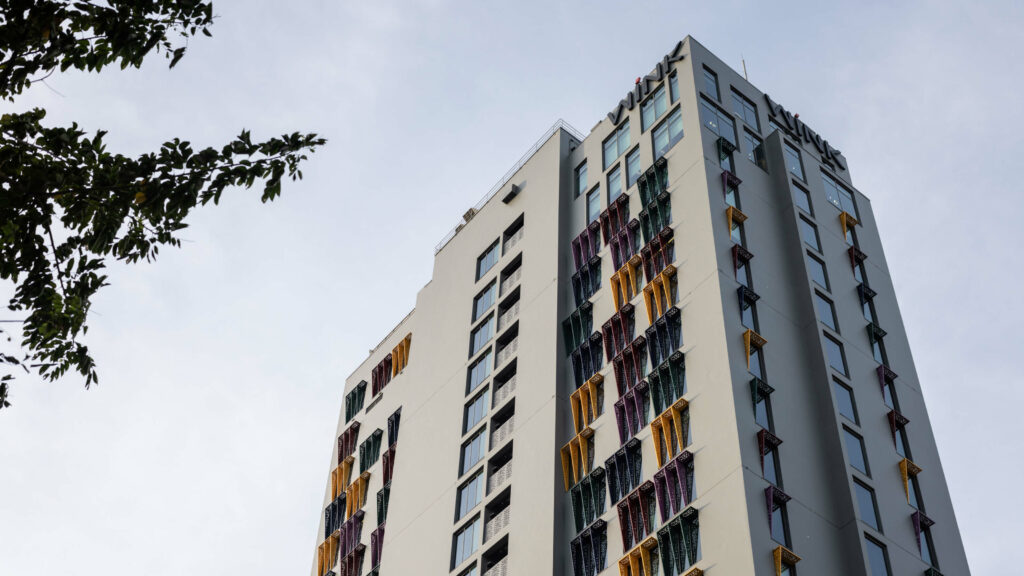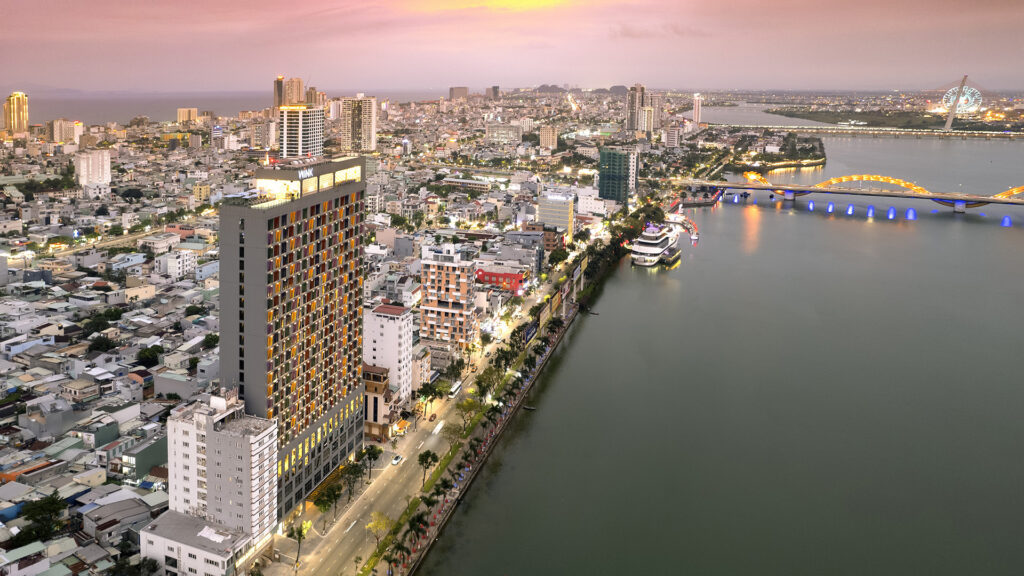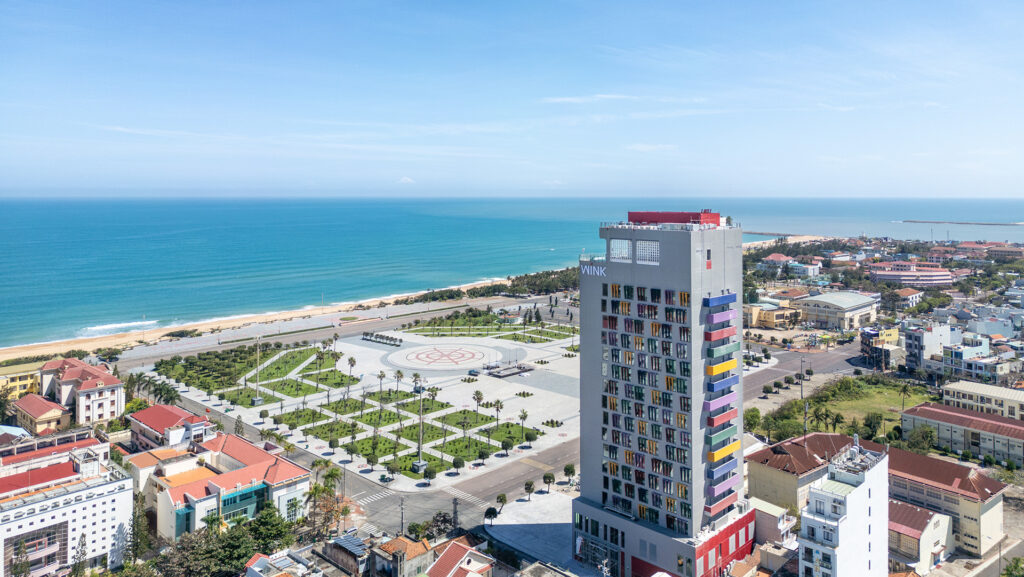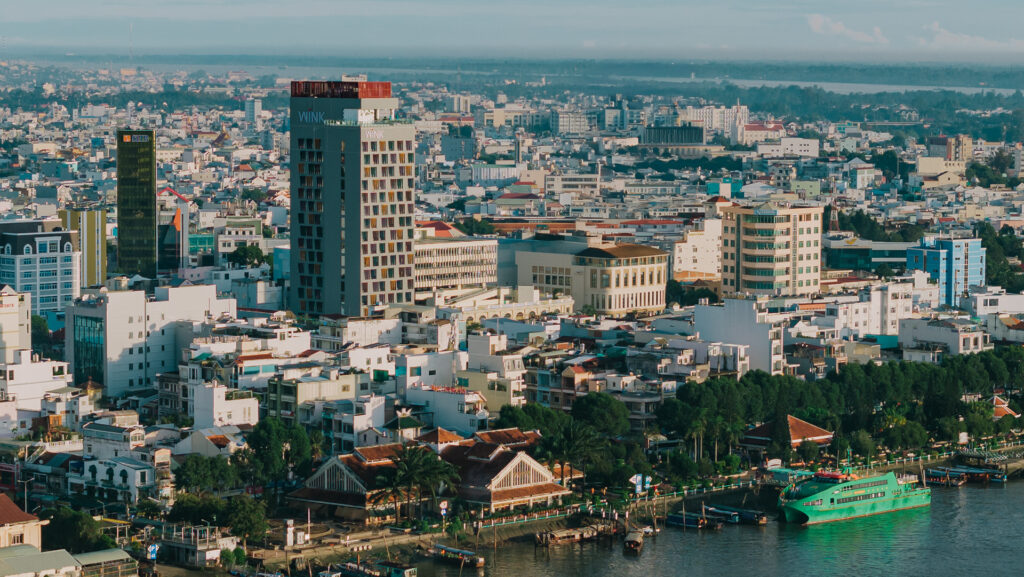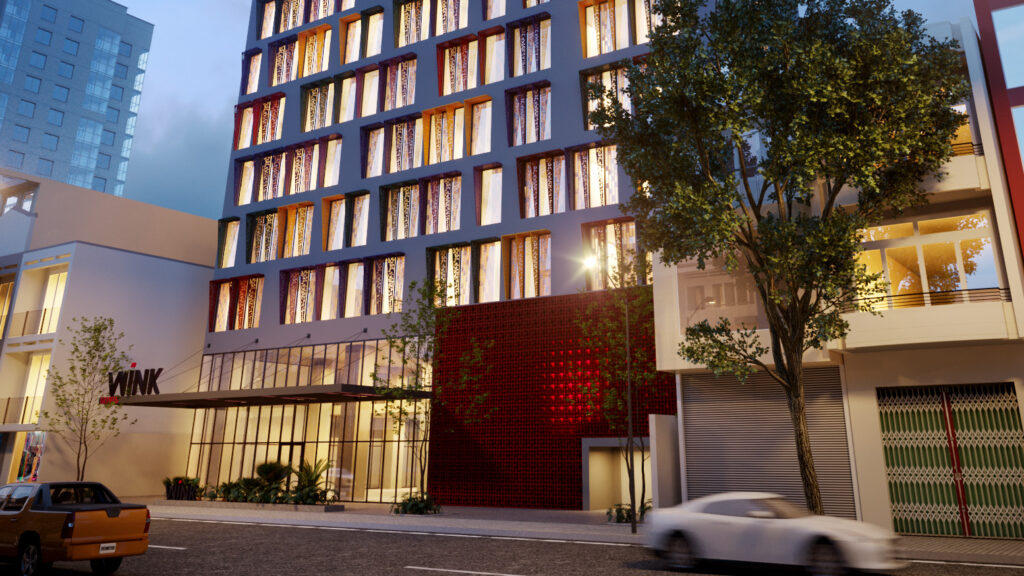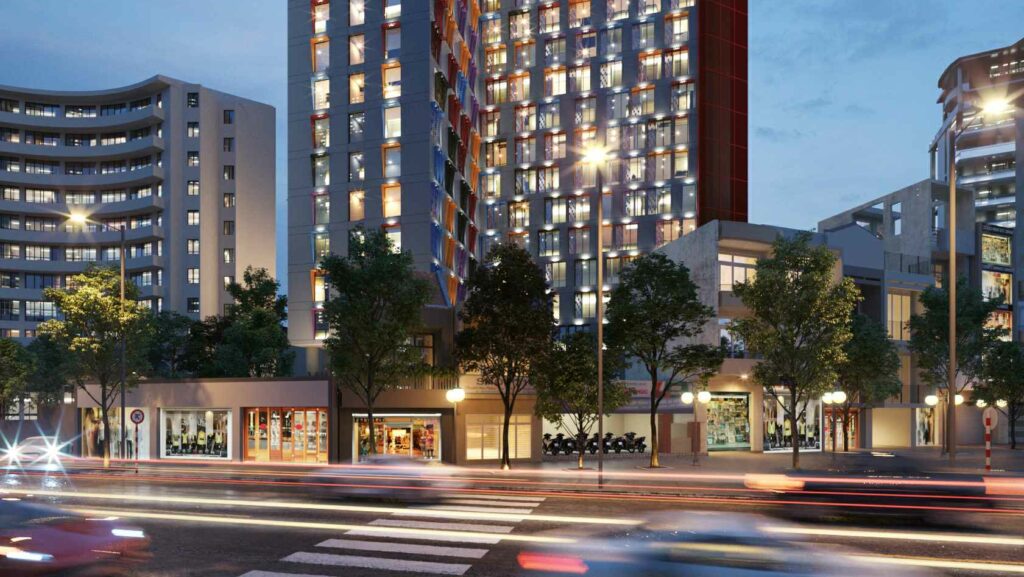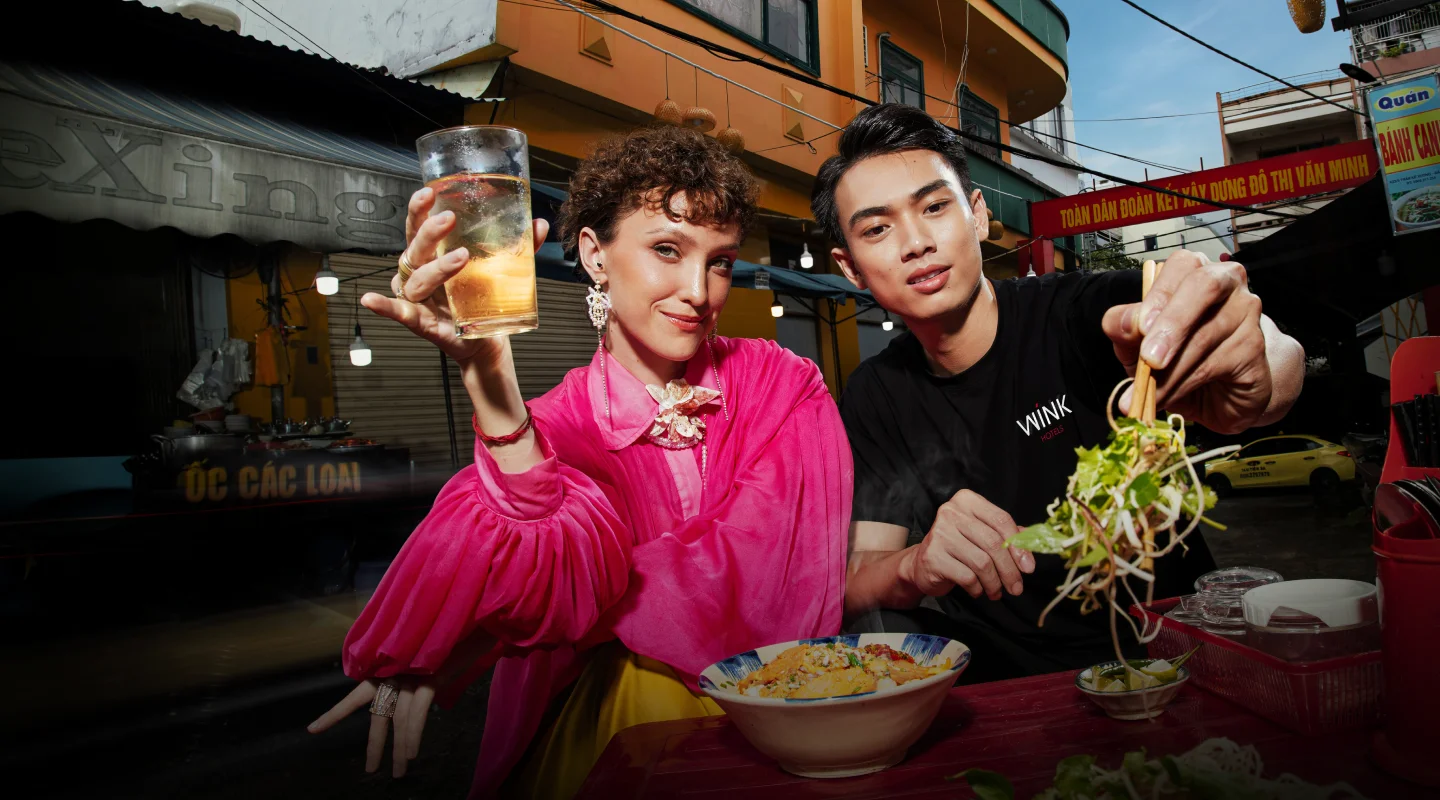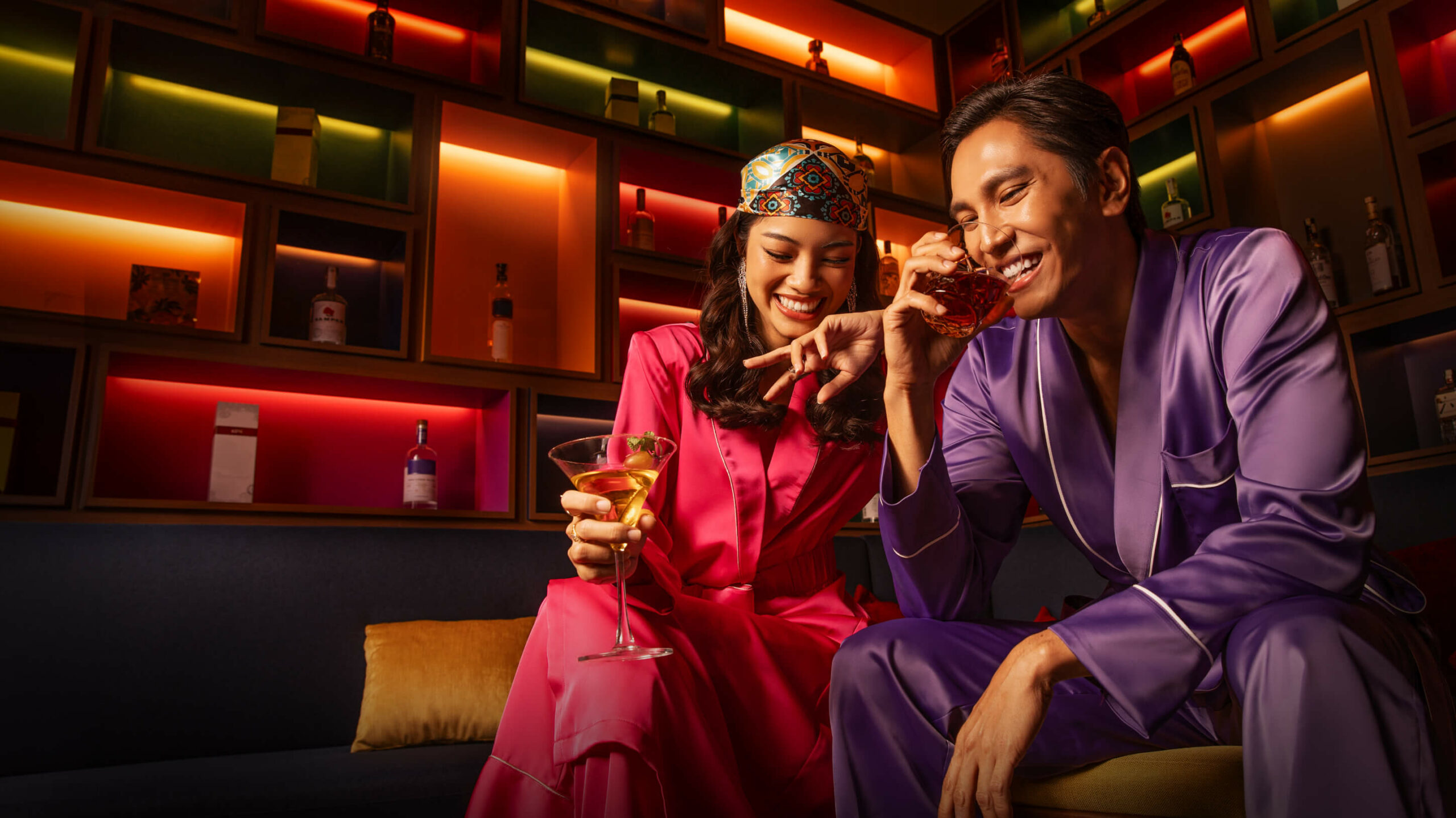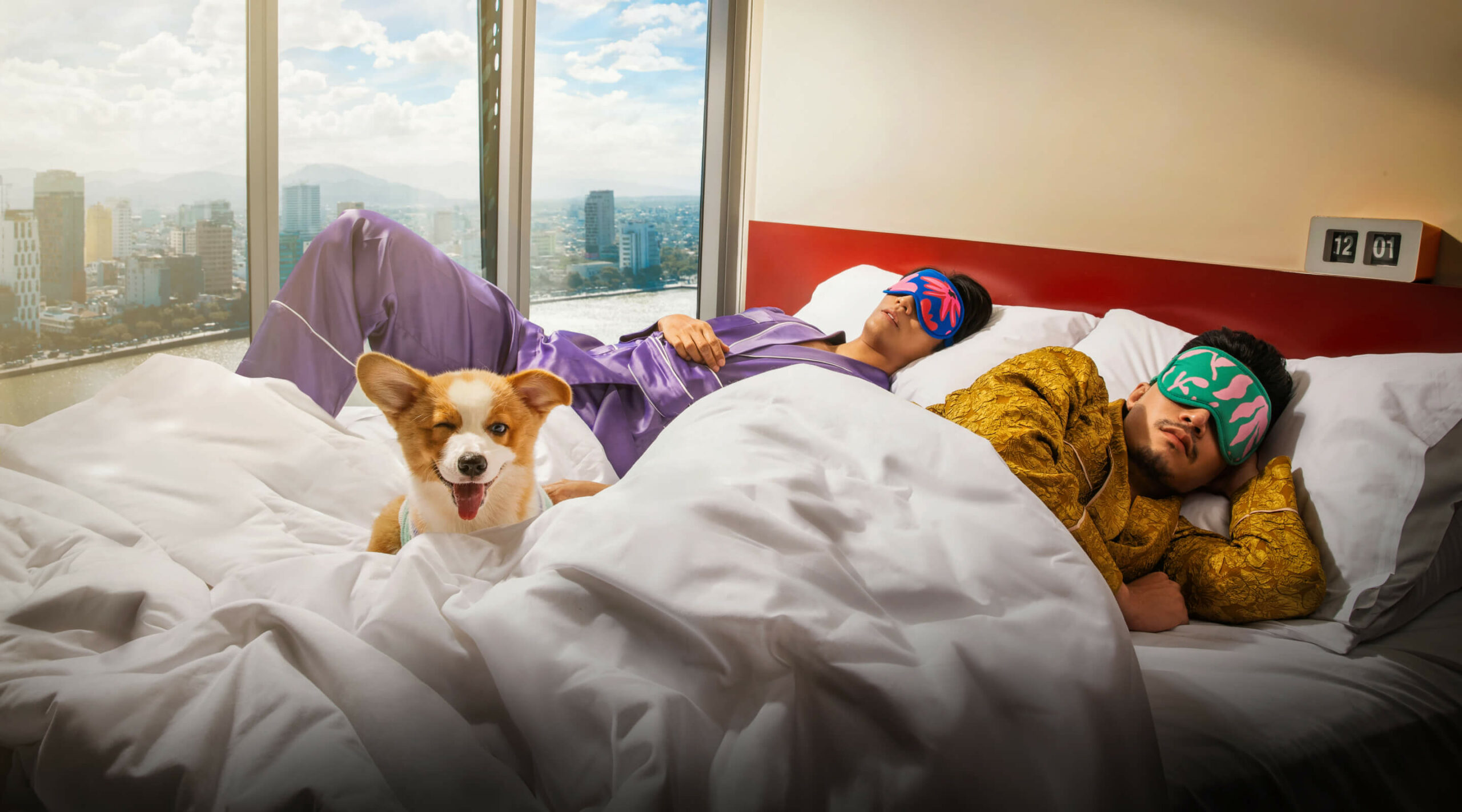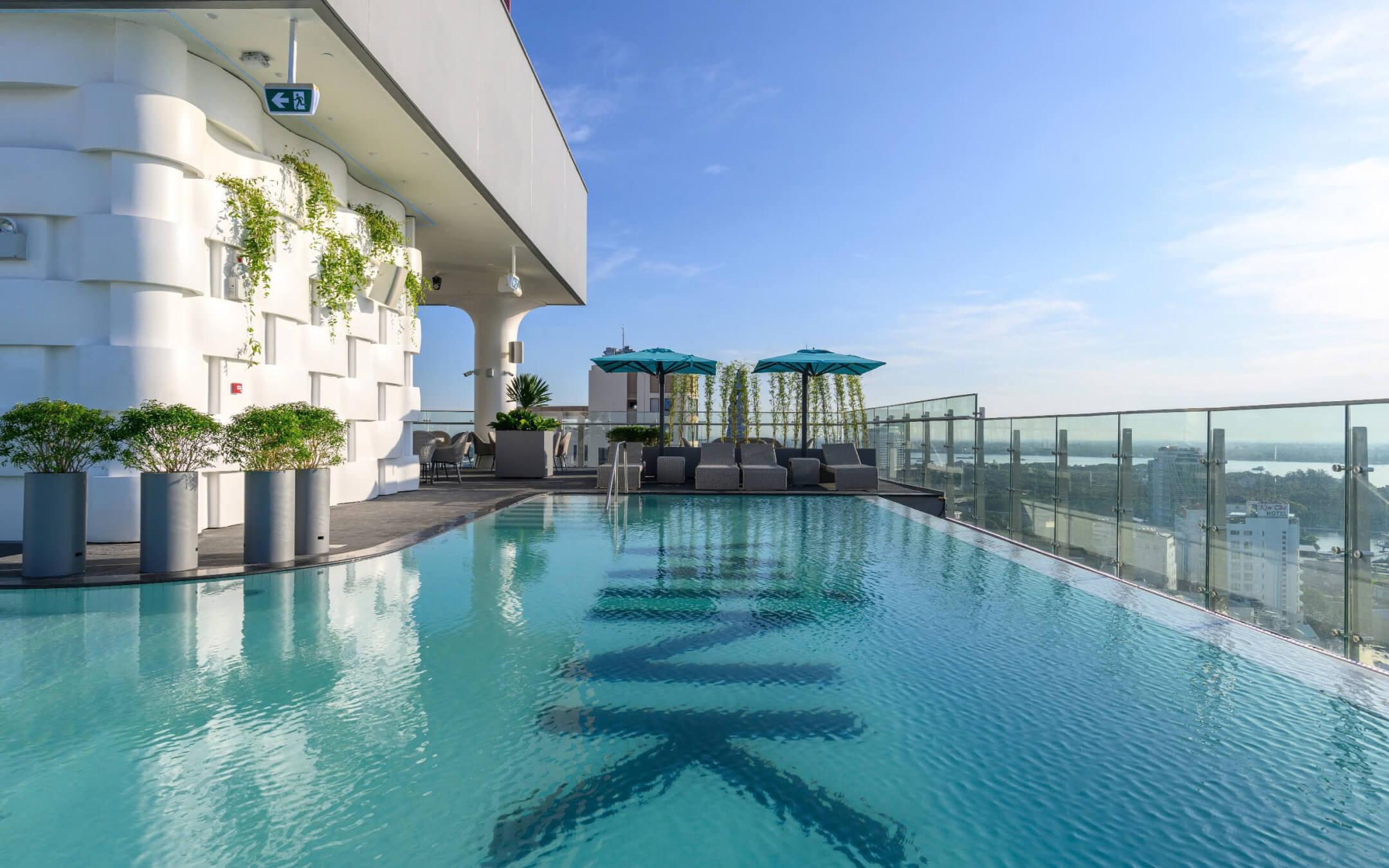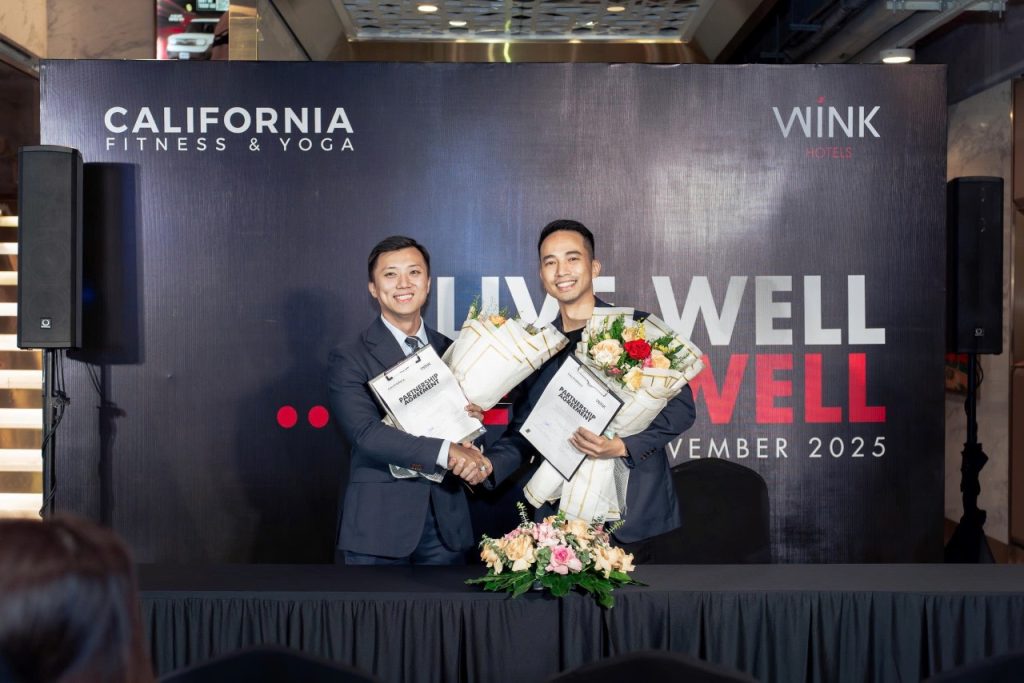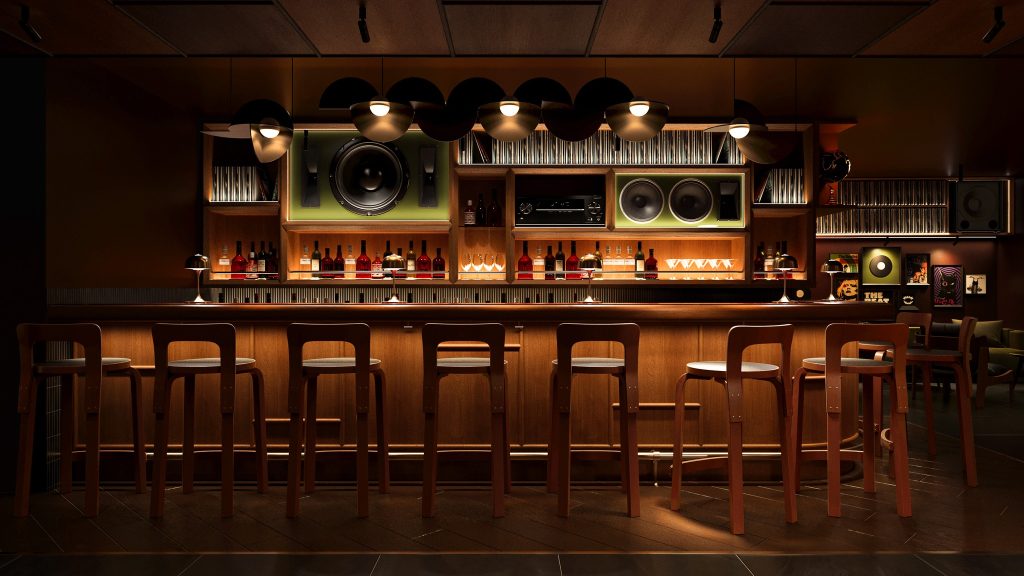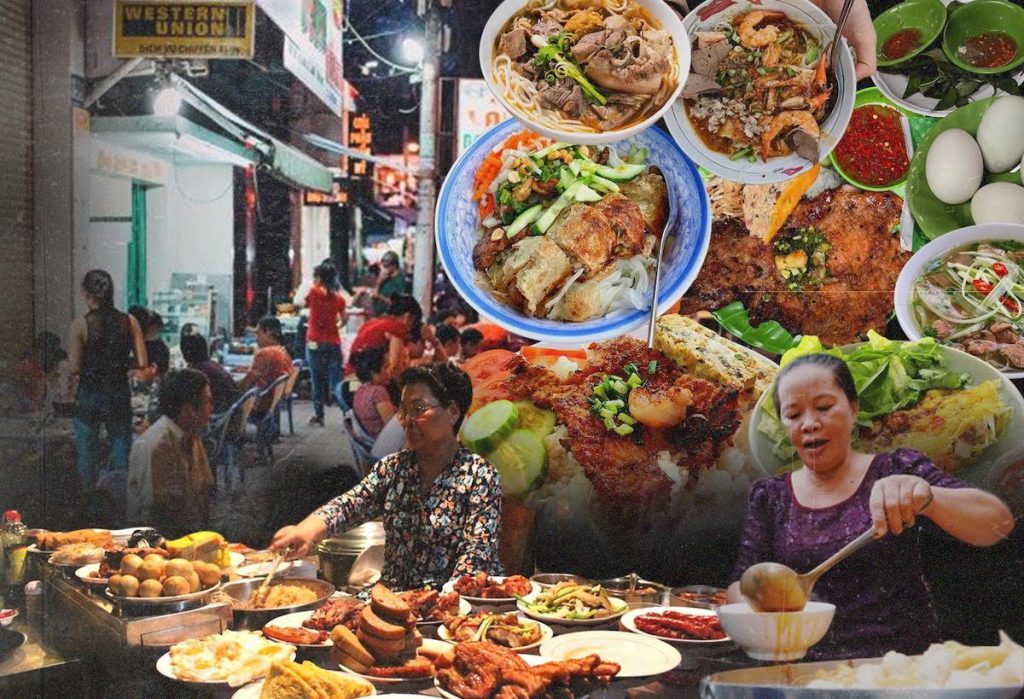How Richie Fawcett Created Our Striking Wink Hotel Saigon Centre Window Blinds
Wink Hotels’ rooms epitomize stripped-back style. Lots of what you do need, nothing of what you don’t. One stand-out feature is revealed when the floor-to-ceiling blind rolls down – a drawing of the hotel’s surroundings by a local artist, Richie Fawcett, who’s been capturing Saigon and beyond in pen and ink for almost a decade.
Đọc bài viết bằng tiếng Việt
In the process, Richie has tracked the seismic shifts the fast-growing city has been through and continues to go through. But his relationship to the city doesn’t end there. As a hugely influential bartender who has a claim to kickstarting the city’s cocktail scene, Richie Fawcett has even gone as far as creating epic concoctions based on the city’s streets, compiled in two Cocktail Art of Saigon drinks manuals. “Call me a ‘bartist’ – a bartender-artist – that about covers it,” he laughs from his stool in the studio he’s created in a historic building on Ly Tu Trong.
“What ingredients would I use to make a Wink cocktail? Vodka, nuoc sam, lemongrass, pandan,” Richie lists off confidently. “Vodka representing a clear modern outlook. Nuoc sam is a cooling street drink found in Saigon made with chamomile and sugar cane, and then the lemongrass and pandan flavours represent traditional Vietnam…”

His artworks are everywhere including lots of reminders of successful solo exhibitions. And in the back is a secret bar hidden behind a wall covered with another of his drawings.
The image on the Wink Hotel Saigon Centre blinds is the latest instalment of a life spent creating: photographs, drinks, now drawings. But in fact, Richie corrects us, drawing has been an ever-present pursuit.
“Even in my university days if it wasn’t for my ability to draw the Egyptian artefacts in the UCL Petrie Museum I would have failed my Egyptian archaeology degree…” he reminisces, “and ultimately art has always been my calling…yet the path to reach this has been meandering to say the least. But in one form or another it has been a thread that has run through my entire life.”

The meandering route went something like this: after graduating with that degree in archeology, he took his camera around London’s clubs as the rave scene blew up. He shot era-defining DJs and artists like Moby, Leftfield, LTJ Bukem, and Brandon Block, and legendary musicians like jazz legend Herbie Hancock for magazines like DJ Magazine and Mixmag, and later models like Katie Price for Loaded (the quintessential British lads’ mag).
He got into bartending, as London’s bars and restaurant hit a boom time and bartending was achieving respect as a career path. “I was inspired by people like Sir Roger Moore at Hush, Wayne Collins and Chris Potts who set up the 5th Floor at Harvey Nichols, Reece Clarke and Luca Cordiglieri,” he remembers, “and bars like Che, Atlantic Bar and Grill, Sketch, Milk and Honey, The Sanderson and The Light Bar St Martins Lane that were achieving major recognition.” Next, he moved to Hong Kong where he worked at places like Republik and other Soho clubs which drew the attention of figures behind Saigon’s about-to-blossom bar and restaurant scene. And not long after he was setting up the bar at Sorae Sushi Sake doing barrel-aged cocktails and playing around with Japanese and other local ingredients way before it was the norm. But he would always be wandering off pre-shift, sketchbook and pens in his bag, to sketch cranes, and skyscrapers in construction, and a city under siege by the wrecking ball.
“Tracking the evolution of Saigon through my drawings has been my long term project since 2012,” he tells us leafing through his stack of sketchbooks purchased from Art Ban (on Le Thi Rieng Street) which has pens and paper imported from Europe. “By the ten-year mark [in 2022] I’ll have drawn over 1,000 sketches of the city…” For Richie, the Wink Hotels project is a key milestone in that. And the Wink Hotel Saigon Centre blinds are the first in a series of drawings from the rooftops of upcoming Wink Hotels that will take him to Danang next as the brand expands offering its affordable luxury concept across the country.

“The creators of the brand commissioned this series of views – detailed cityscapes and panoramic vistas – drawn from the tops of the hotels. Each hotel will have its own unique view from the roof printed on its screens, following that idea, with features in the drawing highlighted with colors that match furnishings and other details within the room…”
The image for Wink Hotel Saigon Centre presents a vista that goes from old to new. “Ancient to modern,” he agrees about the view from the hotels rooftop pointing to the single-story, yellow-walled, red-roofed temple on the corner of Nguyen Van Thu and Nguyen Binh Khiem Streets then back to the Landmark 81 on the horizon. “‘Temples’ dedicated to different kinds of religion — Buddhism and commerce,” he smiles wryly.

Richie is conflicted about the changes happening to Saigon. He sees his work as archival, bearing witness to the city’s inevitable evolution, at a critical juncture in its history. “Some significant buildings are no longer part of this skyline. Places like the Bason Shipyard could and should have been incorporated into the city’s modernization plan. I’d love to see a freeze on all District 1 developments for culturally significant modernist architecture by grading them in listing categories like in the UK – grade 1,2,3 – and the higher the grade the greater the value of the building and the less work to change or destroy the structure can be done on it.”
We wonder which buildings around Wink Hotel Saigon Centre that have escaped redevelopment stand out. “At ground level there are endless interesting house fronts, temples and old buildings. On one corner is an old factory that is still standing. It’s been taken over by more out-of-date businesses like printers and a photocopy shop that I guess I should draw quickly before they’re gone too.”
On the ground, it doesn’t seem possible to have bent and shaped this chaos of buildings into the cohesive image that fits on the blinds. “I always start with the skyline,” Richie explains. “Then I work around the picture to create depth, following the skyline to ensure all the features are correctly placed before adding depth with shadows.” Through a final digital stage, supported by digital artist and collaborator Alex Ling, he adds colours “that make the image pop”.

To get to that stage took five months “and lots of sweating and swearing” in between. The process began in January when the hotel roof became accessible. He took two quick sketches: one a view of District 1 and Bitexco Financial Tower; the other a view looking towards District 2 featuring the Landmark 81 building which was the one selected thanks to the interesting array of rooftops in the foreground like the temple. “The inclusion of the temple in the immediate foreground at the bottom of the image frames the view perfectly and symbolizes the history of Saigon contrasted with its ultra-modernity. And it works, thankfully…” he smiles finally.
Photos by Khooa Nguyen and video by Tuan Jerry and Johnny Viet Nguyen.






